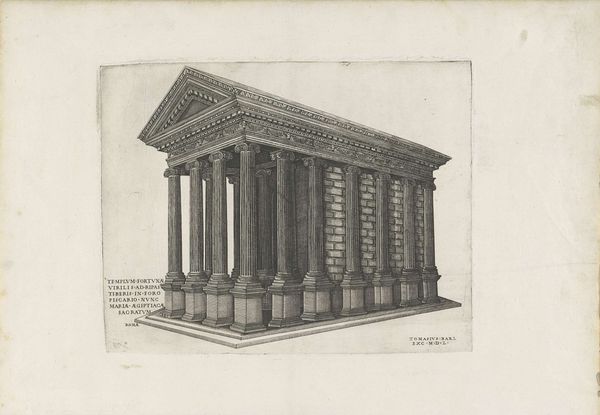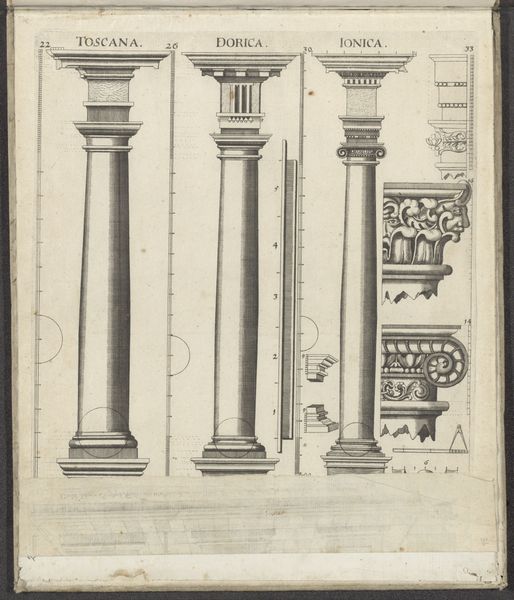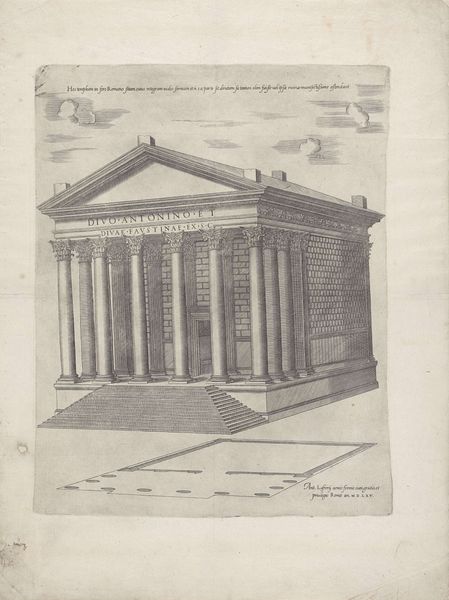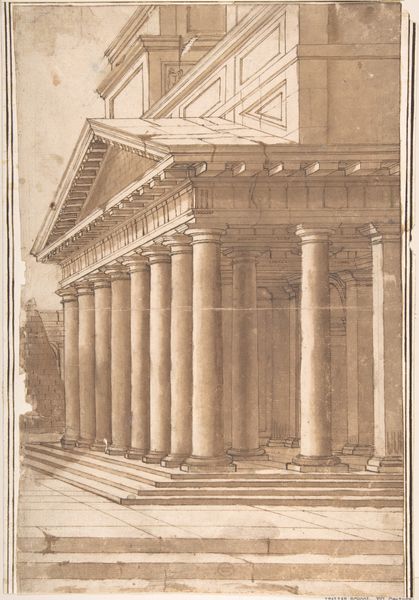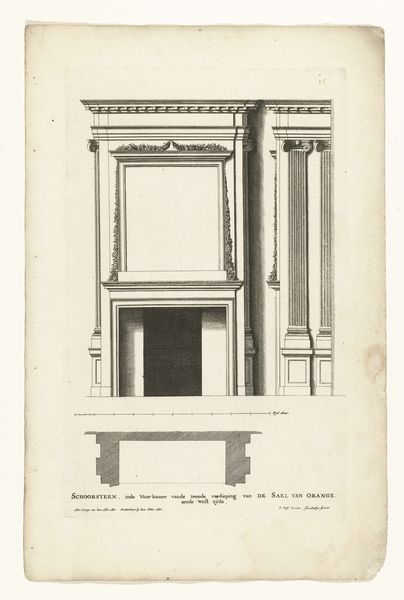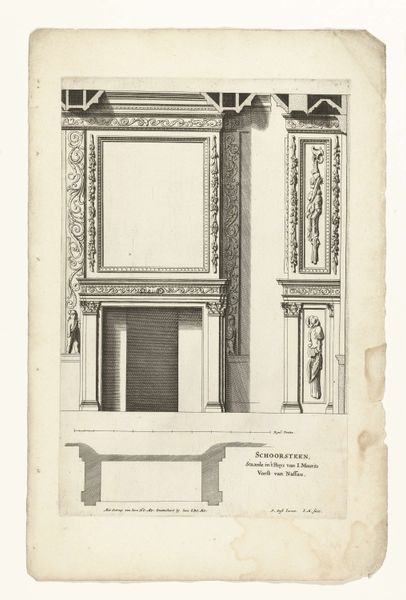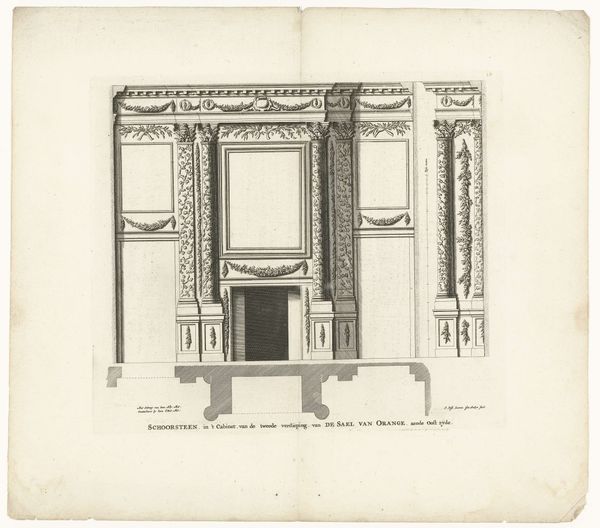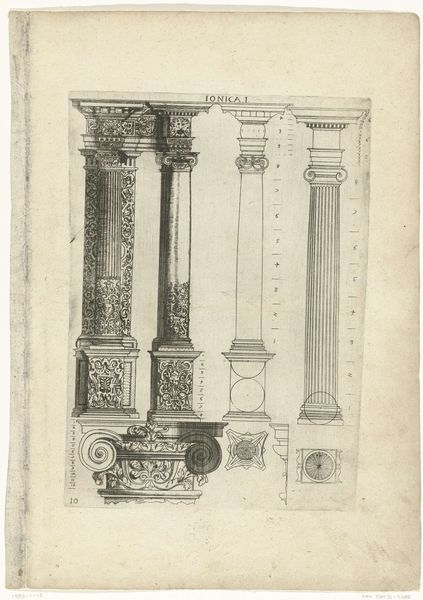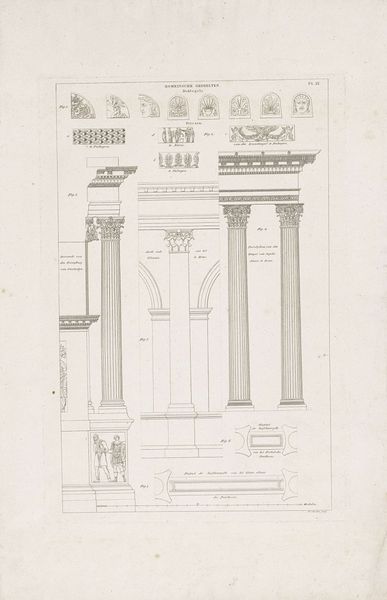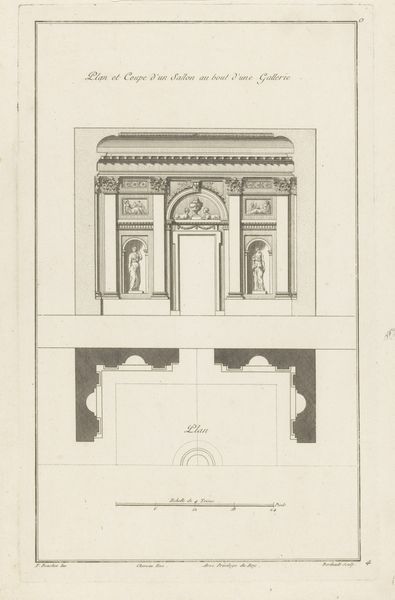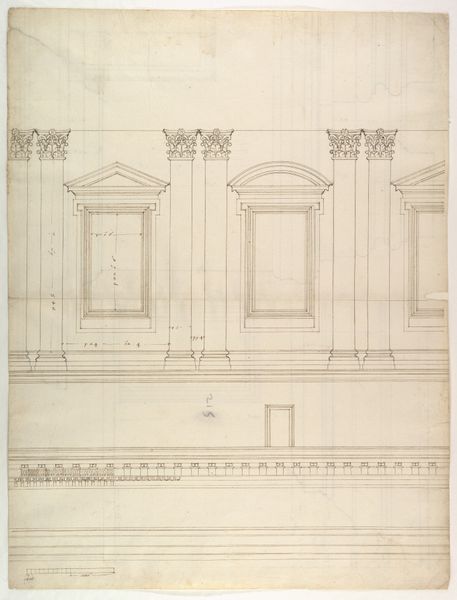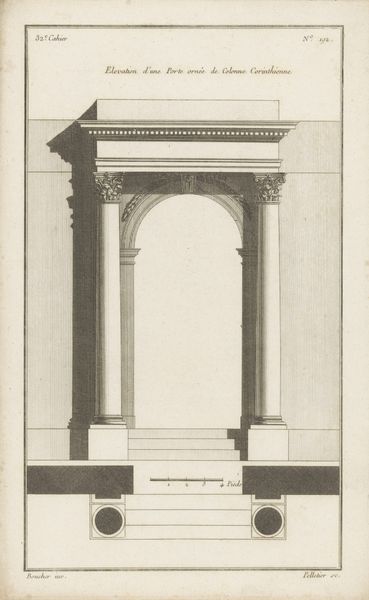
Voorzijde en doorsnede van de Tempel van Juno Regina te Rome before 1784
0:00
0:00
giovannibattistapiranesi
Rijksmuseum
drawing, print, etching, engraving, architecture
#
drawing
#
neoclacissism
# print
#
etching
#
etching
#
perspective
#
form
#
geometric
#
ancient-mediterranean
#
line
#
cityscape
#
history-painting
#
engraving
#
architecture
Dimensions: height 402 mm, width 262 mm
Copyright: Rijks Museum: Open Domain
Curator: Take a moment to observe "Voorzijde en doorsnede van de Tempel van Juno Regina te Rome," created before 1784 by Giovanni Battista Piranesi, currently residing in the Rijksmuseum collection. Editor: Immediately, I’m struck by the stark geometry. It's like an architect’s fever dream—all sharp lines and exacting angles. Is it a blueprint or some kind of reconstruction fantasy? Curator: A bit of both, perhaps! Piranesi, well known for his detailed etchings and engravings, presents us with both a frontal view and a cross-section of the Temple of Juno Regina. Note the emphasis on line and form, key features in the print’s neoclassicism. Editor: Indeed, the technical skill is undeniable. Look at how meticulously he renders each column, each brick. But beyond that technical prowess, what's the statement being made here, the production on view? Was Piranesi interested in promoting neoclassical architecture, or just showcasing his ability to visualize it in exacting detail? Curator: That's a crucial point. The socio-political climate of the time deeply influenced such works. Piranesi wasn't merely an objective recorder; he actively participated in the 18th-century debates about the glory of Rome and how it related to contemporary society. Prints like these circulated widely, shaping perceptions of Roman grandeur and impacting architectural styles across Europe. Consider, also, how prints made art and architecture accessible to a wider audience, changing the modes of its consumption. Editor: It’s the dissemination that piques my interest. These prints effectively democratized Roman architecture—anyone with access to one could engage with these powerful, imposing structures, transforming them into commodities of sorts, reproduced and circulated for widespread consumption and, perhaps, aspirational building amongst Europe’s elite. Curator: Precisely. This connects to broader questions about the accessibility of art and its role in shaping public consciousness. The choice to depict the temple in such detail, almost as a scientific diagram, adds another layer, blurring the lines between artistic representation and architectural documentation, adding to how we engage and discuss our shared history. Editor: I'm fascinated by how it presents architecture. Looking beyond the historical implications and reception, it becomes an engagement with materials: the stone, the labour…a deconstruction, of sorts. Curator: Definitely. Piranesi's print invites us to examine how the cultural values are reflected in material choices and techniques of architectural production. Editor: This look offers much needed considerations. Curator: Indeed, seeing how the temple's form impacts our understanding makes for an even better historical account.
Comments
No comments
Be the first to comment and join the conversation on the ultimate creative platform.
